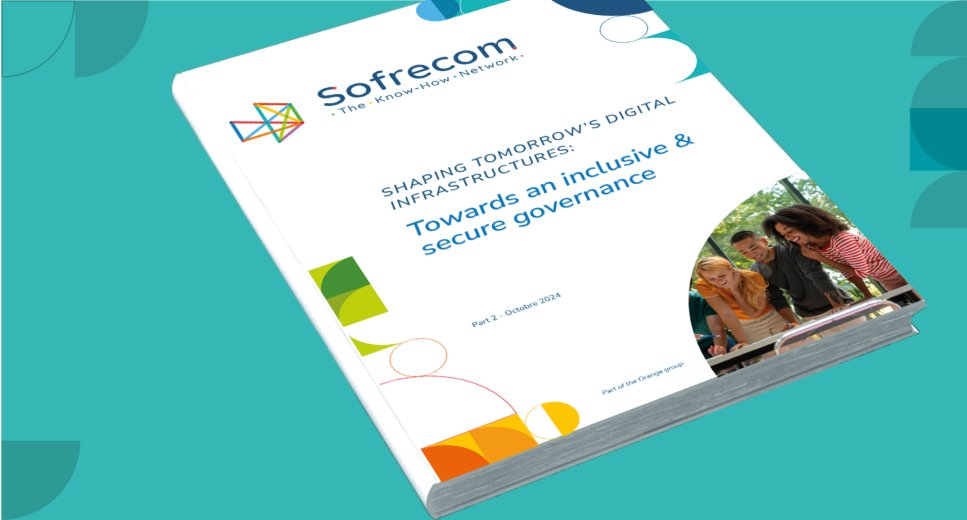E-commerce as a driver of inclusion and development cannot take off without trusted digital services.

Since the adoption of the 2030 Agenda, international, continental, and regional political organizations, donors, and United Nations member countries have been working towards the development of inclusive, robust, secure, flexible, and sustainable National Digital Identification Systems (NDIS). These systems aim to provide every person on the planet with a legal and digital identity by 2030. Establishing such systems requires architectural choices that are tailored and specific to each country.
A unique, reliable, and secure Digital Identity (eID) for social and economic development
The development of digital identification systems is a crucial issue for governments, businesses, and citizens, for development and for peace in the world.
Population registries are essential for national and local development strategies. They are intrinsically linked to the distribution and management of educational institutions, healthcare facilities, and other critical services. Transportation policies, urban planning, and potable water management also depend heavily on accurate population data.
Individually, a citizen without legal identity remains excluded from civil life. They lack access to property, higher education, voting rights, legal recourse, employment opportunities, and the ability to travel.
Moreover, a fragile and weak identity system is vulnerable to cybercrime, including identity theft, crowdfunding for terrorism financing, and money laundering.
E-commerce cannot thrive without trustworthy digital services. Service providers—governments, banks, and telecom operators—need reliable methods to identify and authenticate their online customers, who may otherwise be fictitious. Only a unique and legal digital identity can ensure transaction authenticity, data privacy, and non-repudiation of actions.
The construction of a National Digital Identification System (NDIS) relies on the integration of four key architectural pillars. These pillars involve thoughtful choices that allow for a tailored solution and have been adapted to specific national contexts and requirements.
Identity certification
The certification of identity by public authorities is crucial for ensuring the reliability of a National Digital Identification System (NDIS). This process involves verifying that an individual who claims to have a specific name, gender, date of birth, place of birth, and is associated with parents, is indeed a real person and is uniquely enrolled.
Traditionally, this certification has been based on civil registration, whereby an individual is recorded in the civil registry at birth. However, in many countries, only 30% to 40% of the population is registered in the civil registry. As a result, these governments often turn to biometric technology. Biometrically enrolling citizens by measuring their unique physical characteristics—such as fingerprints, facial features, or iris patterns—is a swift and effective way to establish a national identity register and combat identity theft and fraud. Several African countries are building their NDIS on biometric identity systems with the support of the World Bank through the WURI (West Africa Unique Identification Regional Integration and Inclusion) program, or with backing from the Smart Africa Alliance, an African Union initiative based in Rwanda.
Identity medium
The second key consideration in building a National Digital Identification System (NDIS) is selecting the medium for identity, as traditional PVC or cardboard materials are becoming obsolete. Governments have two technological options:
- Investing in electronic chips: This option involves a significant cost of approximately EUR 10 per chip card, which may likely be passed on to citizens. This investment in electronic chips can provide a secure and portable medium for identity verification.
- Investing in Cloud Infrastructure: This alternative involves establishing a cloud-based infrastructure to host a central database of biometric identities, with each citizen receiving a PIN code for online and real-time authentication. For instance, the Indian government chose this approach through its Aadhaar program. By opting for a cloud-based system instead of costly electronic chip cards, the Indian government aimed to promote inclusion through identity while avoiding the high costs associated with issuing electronic cards to its 1.3 billion residents.
Interoperability and national, regional, and continental recognition
Typically issued by interior ministries, digital identities are not always recognized by other public administrations within a country. To improve citizens' lives, a National Digital Identification System (NDIS) must ensure synergy among various administrations. These administrations include the interior ministry that issues the eIDs, the postal and telecommunications ministry responsible for digital policy, and all other identity-utilizing agencies such as the ministries of transportation, finance, education, health, and employment.
To achieve interoperability on national, regional, and continental levels, countries must rely on standardization and regulatory bodies. In West Africa, for example, ECOWAS (Economic Community of West African States) is working towards this goal. The biometric national ID cards issued by each member country will be recognized as a valid alternative to passports for citizens traveling within the ECOWAS region and for transferring funds within a single digital market.
Centralized vs. decentralized Identity governance
A centralized approach requires a citizen to hold a legal national identifier, issued by the interior ministry, before engaging with any other administration (e.g., tax declarations, job applications etc.). This model consolidates identity management under a single authority, ensuring uniformity and control.
In contrast, a decentralized approach allows multiple administrations to issue a standardized, shared, and mutually recognized digital identity. This model can extend to giving end-users control over their data usage and exchange. Infrastructure costs—often associated with blockchain technology—are shared among administrations and other stakeholders or users of the NDIS.
A Collaborative, developmental approach
Government investment decisions in reliable and secure technologies for enrollment, storage, identity issuance, encryption, and authentication arise from collaborative brainstorming sessions. These sessions aim to co-create the most suitable NDIS architecture tailored to national specifics, such as inclusion challenges, funding possibilities, and national network coverage.
To support its clients on this matter, Sofrecom organizes target-building workshops that bring together relevant ministries, national statistics institutes (INS), electoral commissions, and other key stakeholders. After presenting the issues, evaluating the advantages and disadvantages of each possible solution, and benchmarking solutions used by emerging and developed countries, decision-makers engage in discussions to determine the best technological options. The resulting recommendation is tailored to each country’s unique needs.
NDIS models cannot be directly transferred from one country to another. A reliable, robust, secure, flexible, and privacy-protecting NDIS is the outcome of a thorough development process guided primarily by the goal of citizen inclusion.






